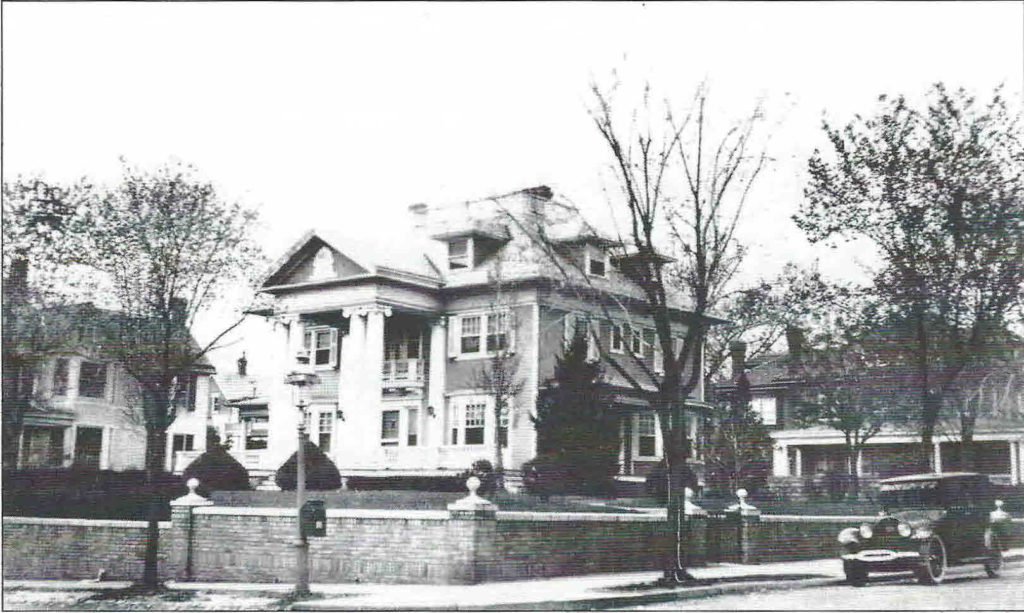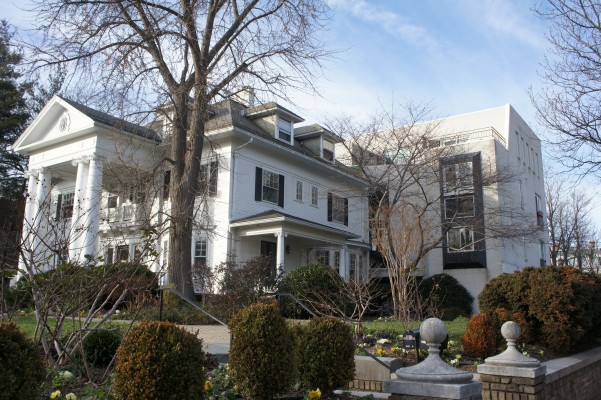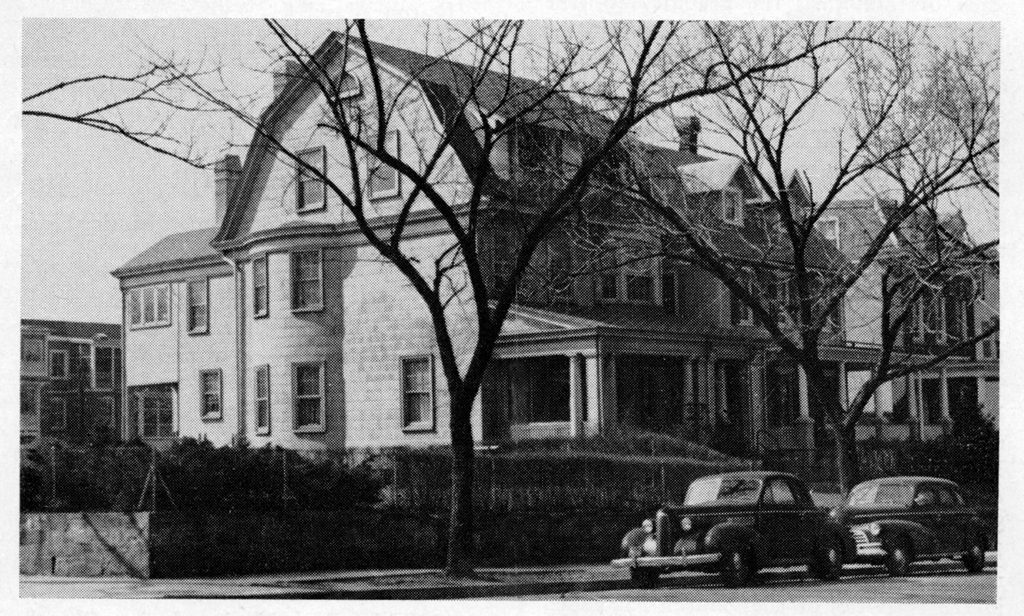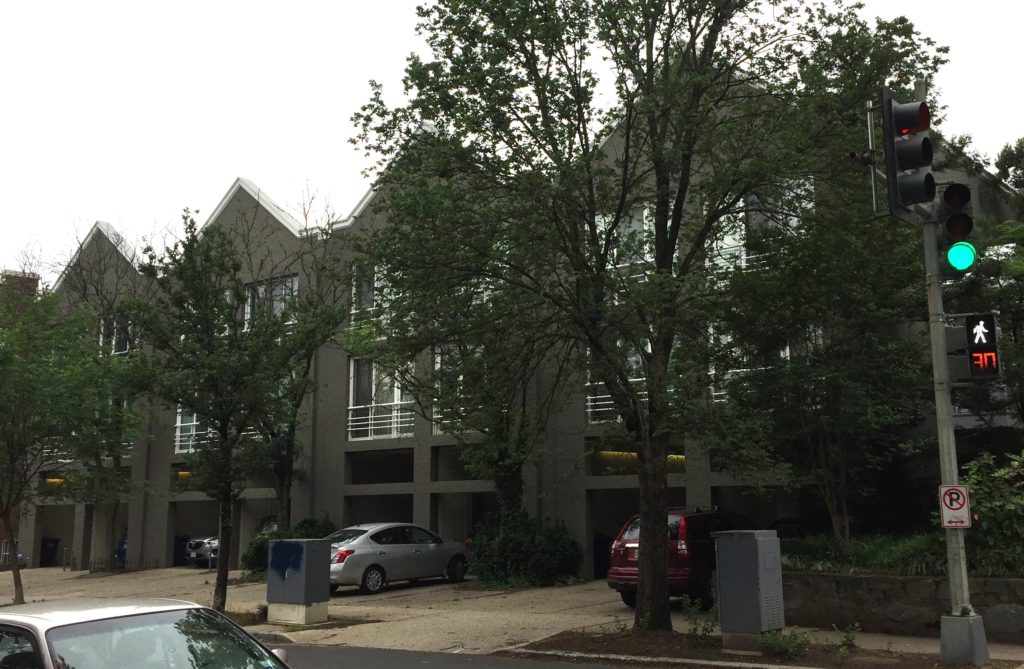In 1977, a developer purchased the 1903 Georgian Revival house at 1801 Park Road with the intention of razing it and replacing it with smaller townhouses.
Neighbors, alarmed at the prospect of losing this neighborhood landmark, mobilized to save it. At the time, the National Preservation Act of 1966 offered the only known legal protection for the property, and the group sought the assistance of Don’t Tear It Down (predecessor to the D.C. Preservation League) to determine what action to take. This led to the inclusion of the north side of the 1800 block of Park Road in the D.C. Inventory of Historic Sites on December 14, 1977, and the filing in 1978 with the National Park Service of an application to designate that portion of Park Road as a Category II Landmark under the 1966 law. The application was approved on November 15, 1978, and provided the leverage to negotiate a development plan with the new owner which prevented demolition of the house. Unfortunately, the plan entailed the construction of the large brick rear addition, recognizing the developer’s right under zoning regulations to convert the property to 13 units. The project was approved by the Board of Zoning Adjustment, including variances from ordinary rear yard, lot occupancy, and height requirements, on December 6, 1978.
While the fate of 1801 Park Road was being determined, the District of Columbia was in the final stages of enacting a local preservation law within the framework of the 1966 federal law. The Historic Landmark and Historic District Protection Act of 1978, D.C. Law 2-144, was signed by the Mayor on December 27, 1978, and took effect on March 3, 1979. Experience with 1801 Park Road – and the growing threat to other large properties in the neighborhood – had convinced people concerned about the future of Mount Pleasant that a global approach was needed; but there was also concern about the restrictions that might accompany the creation of a historic district. Historic preservation was still very much in its infancy, and there were few established rules or models to go by.
Meanwhile, developers continued their assault on our historic buildings. In 1977, 3100 16th Street, the large detached house at the northwest corner of 16th and Irving Streets, along with the adjacent row of houses at 3101-3109 Mount Pleasant Street, were also acquired by the new owner of 1801 Park. They were razed and replaced with the suburban style houses that remain today. The corner house – shown in the drawing below by noted architect Nicholas T. Haller – was a striking presence on 16th Street.
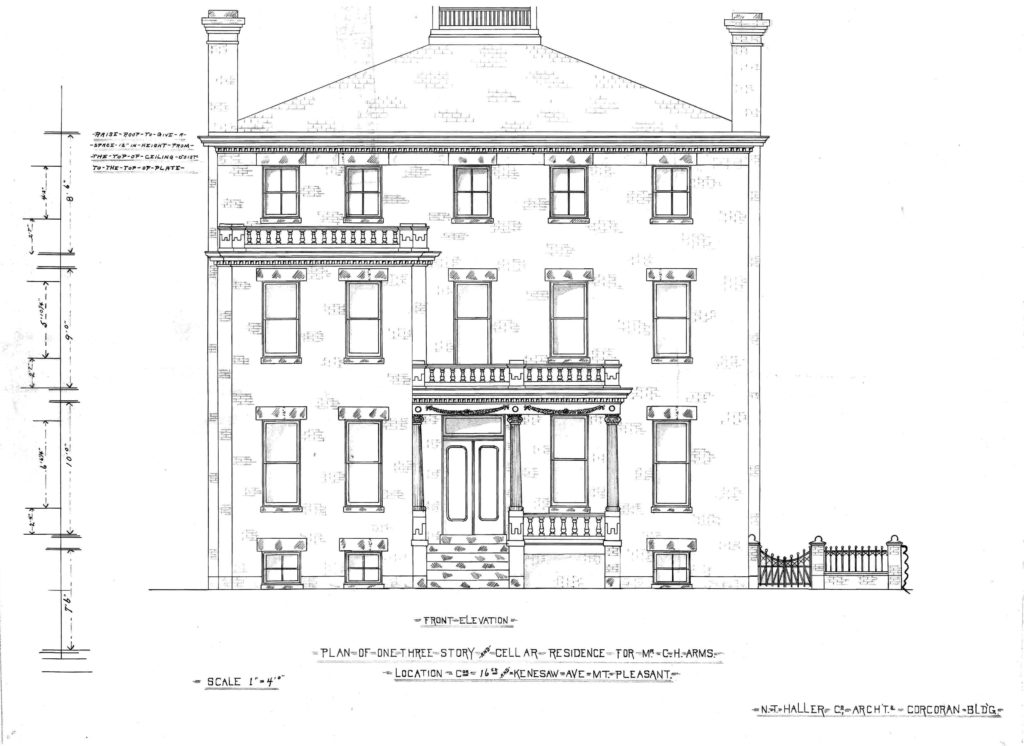
Architectural drawing of house to be built at the intersection of 16th St. NW and Kenesaw Ave. NW, what is now the intersection of Mount Pleasant St. and Irving St.
The large corner property at 1800 Park Road was next.
It was demolished and replaced by 8 row houses of no particular style with front entrances through gaping garages that opened directly onto 18th Street.
If doubts remained about the risks of historic designation, there could no longer be any doubt about what would be lost if historic designation were not achieved – and achieved quickly – for the neighborhood.In 1982, the Advisory Neighborhood Commission for Mount Pleasant filed an historic district application for the neighborhood. However, it was not until July 31, 1984, that the Historic Preservation Review Board held a hearing on the application, and then no decision was made. In March 1985, with still no ruling from the HPRB, a newly-elected ANC voted 3 to 2 to withdraw the application. On April 2, 1985, in order to continue to pursue establishment of an historic district, several residents filed the Articles of Incorporation for Historic Mount Pleasant. On June 27, 1985, Richard O’Connor, HMP’s first President, filed a new application for creation of the Mount Pleasant Historic District and asked for expedited review. (Mount Pleasant Historic District Nomination) Finally, on October 15, 1986, the HPRB approved the application.
Once the historic district was created, HMP turned its attention to working with the community and the Historic Preservation Office to apply the standards of the 1979 law to projects in our neighborhood. Over the years, most of our work has focused on design review and permit enforcement. HMP was also instrumental in the creation of Mount Pleasant Main Street in 1993 and actively supported its programs for many years. We supported restoration of the police callboxes to showcase bronze sculptures by Michael Ross, as well as development of the heritage trail that led to Mara Cherkasky’s 2007 book on Mount Pleasant. In 2010, we conducted research on the history of Mount Pleasant Street and are continuing to use that information to encourage restoration of deteriorated features along our commercial corridor. (Go to Mount Pleasant History for more info.) More recently we advocated changes to the 1958 zoning regulations that had encouraged the conversion of single family houses to apartment houses of three or more units. (More information about this issue may be found at – Zoning) The Zoning Commission approved amendments to the zoning regulations in June 2015 that address this issue. We will be following their implementation closely to see whether further changes are needed.
